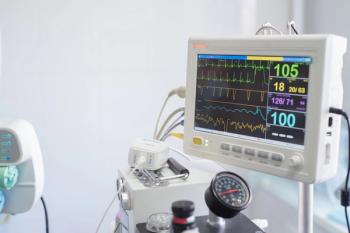
Chromosomal Problems Affect Nearly All Human Embryos
Ms Vanneste and her team studied each cell from 23 three or four day-old IVF embryos from young (less than 35 years old), fertile couples who had asked for preimplantation genetic diagnosis (PGD). PGD is carried out where one or both parents have a known genetic abnormality, in this case an X-linked disorder or the microdeletions (loss of a tiny piece of a chromosome) that can cause such disorders as the cancer predisposition syndrome neurofibromatosis type 1.
25th annual conference of the European Society of Human Reproduction and Embryology
Wednesday 1 July 2009
Amsterdam, The Netherlands: For the first time, scientists have shown that chromosomal abnormalities are present in more than 90% of IVF embryos, even those produced by young, fertile couples. Ms Evelyne Vanneste, a PhD student in the Centre for Human Genetics and the University Fertility Center
Ms Vanneste and her team studied each cell from 23 three or four day-old IVF embryos from young (less than 35 years old), fertile couples who had asked for preimplantation genetic diagnosis (PGD). PGD is carried out where one or both parents have a known genetic abnormality, in this case an X-linked disorder or the microdeletions (loss of a tiny piece of a chromosome) that can cause such disorders as the cancer predisposition syndrome neurofibromatosis type 1. The embryos are screened to avoid the implantation of one carrying that abnormality. Such embryos are the most representative of normal human embryogenesis, the process that begins once an egg has been fertilised.
Using new technologies that can detect chromosomal aberrations in the whole genome (all human chromosomes) of a single cell, the team was able to screen embryonic cells at a much higher resolution than previously, and hence identify more chromosomal abnormalities than has been possible using the current technique, fluorescent in situ hybridisation (FISH), which can only analyse ten of the approximately 32,000 genetic regions at the same time.
“Until now, the majority of studies analysing the genetic composition of human embryos used low resolution techniques on embryos derived from couples with fertility problems who are at risk for embryonic aneuploidy, an aberrant number of chromosomes, such as three copies of chromosome 21 that results in Down’s syndrome. Therefore, little was known about the frequency and type of chromosomal imbalances in embryos from normal, fertile women,” said Ms Vanneste. “Our new technique has enabled us to show that chromosomal abnormalities are far more common and complex than previously anticipated, even in embryos from young, normal fertile couples. This leads us to believe that such abnormalities must be present in all human IVF-ICSI embryos.
“Although in vitro culture conditions are known to have a limited influence on the rate of chromosomal imbalances in IVF
The scientists say that their work has important implications for preimplantation genetic screening (PGS) in fertility treatment. PGS is routinely used in many fertility centres for couples who encounter problems with conception, particularly for advanced maternal age, repeated failure of implantation, repeated miscarriages, or severe male fertility problems. In PGS, a single cell is removed from the early embryo for genetic testing, since it is hypothesised that the selection of chromosomally normal embryos for uterine transfer would increase the live birth rate and decrease the spontaneous abortion rate per embryo transferred.
“Although PGS is promoted as a way of increasing the chances of a successful pregnancy,” said Ms Vanneste, “there has never been any significant evidence that it does, in fact, increase live birth rates after IVF. Our findings have shown that almost every cell of a human embryo carries a different genetic composition; consequently, the one cell that is analysed genetically is not representative of the rest of the embryo. If the tested cell is genetically abnormal, the embryo will not be transferred. But the rest of the embryo might be normal and develop into a healthy person. Therefore, the use of PGS means that potentially viable embryos will be discarded. The prevalent chromosomal instability in all early human IVF embryos explains the failure of PGS to improve the live birth rate per embryo transferred.
“I think that we have made a crucial breakthrough that will change the way we do preimplantation genetic diagnosis and PGS and help to advance our ability to improve human fertility,” said Ms Vanneste.
References:
Abstract no: O-277 Wednesday 14.45 hrs CEST (Hall 3A)
In English and French:
Mary Rice:
Te;: +33(0)3 21 82 54 44
Mobile: +33(0)6 68 93 06 50
Email: Mary@mrcommunication.org
In English:
Emma Mason
Tel: +44 (0) 1376 563090
Mobile: +44 (0) 7711 296n986
Email: wordmason@mac.com
In Dutch and English:
Peter Vermij
Tel: +31-20 618 3420
Mobile: +31 6 290 300 43
Email: peter@vermij.com
Press Office: (Sunday 28 June â Wednesday 1 July)
Mary Rice, Emma Mason, Peter Vermij, Hanna Hanssen
Tel: + 31 (0)20 544 5813 and 31(0)20 544 5814
Fax: + 31 (0)20 544 5815
Newsletter
Get the latest clinical updates, case studies, and expert commentary in obstetric and gynecologic care. Sign up now to stay informed.
















